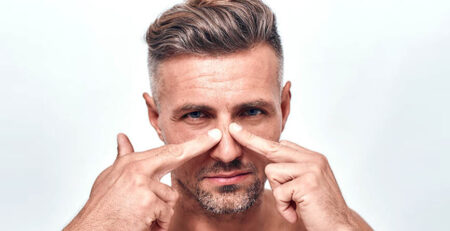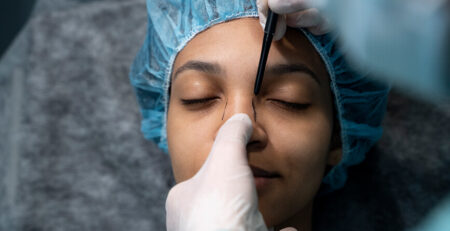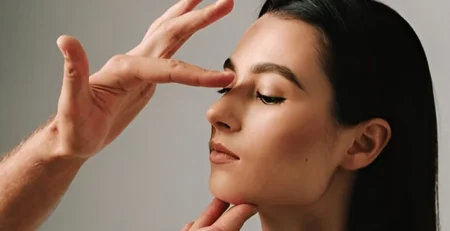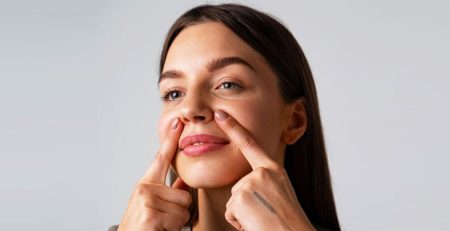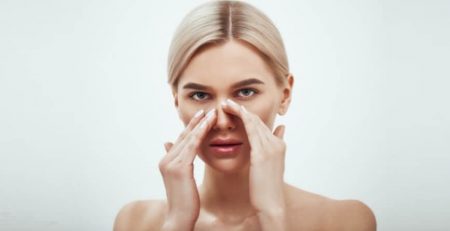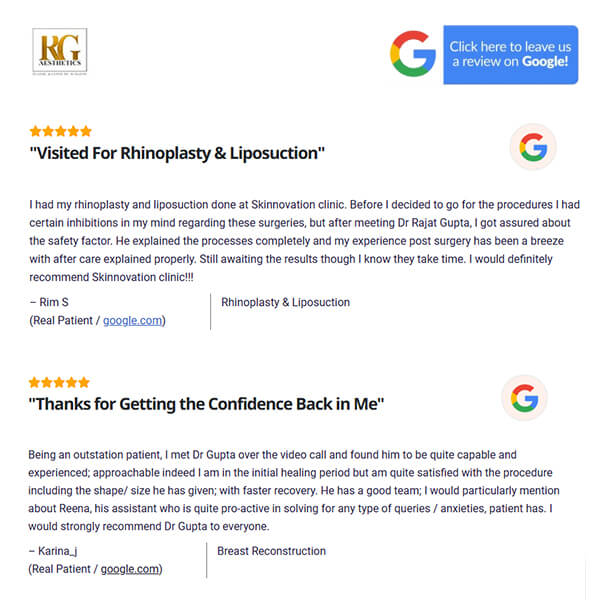Complete Guide to Rhinoplasty/Nose Job
Have you ever felt self-conscious about the appearance of your nose? You may believe it’s too big, too small, or doesn’t fit the rest of your facial features.
Many people struggle with feelings of self-consciousness and insecurity regarding the appearance of their noses. But did you know that these concerns can be addressed with a rhinoplasty procedure, also known as a nose job?
By reshaping the nose, correcting structural issues, and creating a more aesthetically pleasing appearance, rhinoplasty can greatly improve one’s self-confidence and overall satisfaction with their appearance.
So, are you ready to learn more about how rhinoplasty can improve your nose appearance? Keep reading!
What to Expect after the Procedure?
So you have decided to undergo a rhinoplasty procedure to enhance the appearance of your nose. But what can you expect after the surgery? While every individual’s experience is unique, some general guidelines and expectations can help you prepare for recovery. Let’s explore what you can expect after your rhinoplasty procedure.
Immediately after the Procedure
Immediately after the rhinoplasty procedure, you will be taken to a recovery room, where you will be closely monitored until you are awake and alert. During this time, you may experience some discomfort, swelling, and bruising, which is normal.
A splint will be placed on your nose to protect and support your new nasal structures as they heal, and you may also have dressing or bandages around your nose. Once you are cleared to leave, you will be driven home by a trusted companion who should stay with you for the first 24 to 48 hours if you need assistance. Dr Rajat Gupta, a board-certified plastic surgeon, will provide specific instructions on caring for your nasal splint and managing any pain or discomfort. It is important to follow these instructions carefully.
Week 1
During the first week after your procedure, you can expect swelling, bruising, and discomfort around your nose and eyes. Your plastic surgeon will provide you with specific instructions on how to manage these symptoms, which may include the use of pain medication and cold compresses. You should also avoid strenuous activities and keep your head elevated to minimise swelling.
Week 2-3
During the second and third weeks after rhinoplasty surgery in Delhi, the swelling and bruising should start to subside, but you may still experience some tenderness and discomfort. You should follow your plastic surgeon’s aftercare instructions, including avoiding exercise and other activities that can raise your blood pressure.
Week 4-6
By the fourth to sixth week, most of the swelling should have gone down, and you should start to see the initial results of your procedure. Your plastic surgeon will continue monitoring your progress and provide additional instructions or recommendations as needed.
Week 6 and Beyond
As the weeks go by, the swelling and tenderness should continue to subside, and the final result of your rhinoplasty procedure should become more apparent. It can take several months for the full effects of the surgery to become visible, but with proper aftercare and follow-up, you should be able to enjoy a smooth and successful recovery.
Every individual’s recovery experience is unique, and your plastic surgeon will provide you with more specific information about what you can expect during your recovery. By following your surgeon’s instructions and a bit of patience, you can achieve desired results.
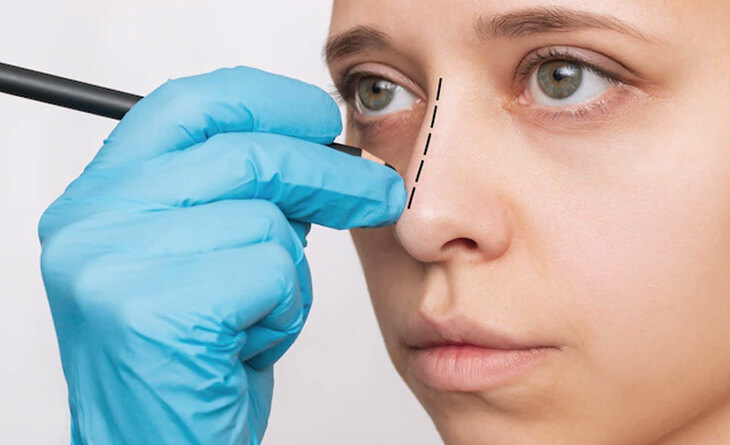
Have questions or want to get started? We are ready to help you with a smile!
Downtime
The downtime for rhinoplasty varies depending on the extent of the procedure, the individual patient’s healing process, and other factors such as age, health status, and postoperative care.
On average, most people take about one week off from work or other normal activities after rhinoplasty surgery in Delhi. During this time, you can expect to experience some swelling, bruising, and discomfort, and you will need to take steps to protect and support your new nasal structures as they heal.
After the first week, you may be able to return to light activities and work, but you should avoid strenuous exercise, heavy lifting, and other activities that can raise your blood pressure for at least several weeks after the procedure.
As your plastic surgeon instructed, you may also need to avoid wearing eyeglasses or putting on makeup for a certain time.
By weeks 4-6, you will feel more like yourself, and you may be able to return to normal activities, including exercise and work. However, this will depend on your recovery process.
The downtime for the rhinoplasty procedure depends on several factors, including:
The extent of the procedure: The more extensive the procedure, the longer the recovery time is. More complex rhinoplasties, such as revision surgeries, typically have a longer downtime than primary rhinoplasties.
Healing rate: Every person heals differently, and the length of downtime can vary based on individual factors such as age, health status, and the rate of healing.
Type of anaesthesia: Rhinoplasty can be performed under either general anaesthesia or local anaesthesia with sedation. General anaesthesia typically requires a longer recovery time compared to local anaesthesia.
Postoperative care: Careful attention to aftercare instructions and following your plastic surgeon’s advice can help ensure a smooth recovery and reduce the length of rhinoplasty procedure downtime.
Physical activity: The extent of physical activity during the recovery period can also affect the length of downtime. If you are engaging in strenuous exercise or heavy lifting too soon after the procedure, it can prolong recovery.
Follow your plastic surgeon’s aftercare instructions carefully and listen to your body for a smooth and quick recovery. Your plastic surgeon will be able to provide you with a more accurate estimate of the expected downtime for your particular procedure and recovery process.
Effectiveness of Non-Surgical Procedure
Non-surgical rhinoplasty, a non-invasive or liquid nose job, involves injectable fillers to reshape the nose without surgical intervention. Non-surgical rhinoplasty surgery in Delhi can address various aesthetic concerns, such as a bump on the nose, a flattened nasal tip, or asymmetry.
This procedure usually takes a few minutes to complete in an office setting. The effects of non-surgical rhinoplasty are temporary and typically last for 6 to 12 months, after which the filler must be redone to maintain the desired results.
Here are a few key points to consider when evaluating the effectiveness of non-surgical rhinoplasty:
- Minimal downtime: Unlike surgical rhinoplasty, which often requires several days to a week of recovery time, non-surgical rhinoplasty usually only requires a few hours of downtime.
- No incisions or scars: The filler used in the non-surgical rhinoplasty procedure is injected through a small needle, so there is no need for incisions or cuts. This means there is no risk of scarring or other visible marks left on the skin after the procedure.
- Immediate results: Surgical procedure often requires several weeks or even months to see the final results, but the results of non-surgical rhinoplasty are typically immediate, and patients can see the changes in their nose shape immediately with only minimal swelling or redness.
- Minimal risk of complications: The procedure is relatively non-invasive and only involves injections of filler into the nose, so the risk of complications is generally low. Common side effects of non-surgical rhinoplasty, such as swelling and bruising, are usually mild and resolve independently within a few hours or days. Dr Rajat Gupta will prescribe you the best option according to your desired goals.
- Temporary results: The results of non-surgical rhinoplasty are temporary and typically last for 6 to 12 months, after which the filler will need to be redone to maintain the desired results. On the other hand, if the patient is satisfied with the results of non-surgical rhinoplasty, they will need to repeat the procedure periodically to maintain the desired shape of their nose.
- Limited reshaping: The filler used in non-surgical rhinoplasty can be used to make minor changes to the shape of the nose, such as smoothing out bumps, raising the tip of the nose, or straightening the bridge of the nose. However, more significant changes to the shape of the nose, such as reducing the size of a nose or altering the nostrils, are not possible with non-surgical rhinoplasty and would require a surgical procedure. Dr Rajat Gupta will advise you on the best course of action based on your outcomes.
- Not suitable for functional problems: Non-surgical rhinoplasty is not ideal for correcting functional issues with the nose, such as a deviated septum or breathing difficulties.
- Not a permanent solution: Non-surgical rhinoplasty is not a permanent solution for reshaping the nose, and repeated treatments may be needed to maintain the desired results. Non-surgical rhinoplasty is a good option for those unsure about changing their nose permanently.
Non-surgical rhinoplasty can be a convenient and effective option for minor cosmetic changes to the nose, but it has limitations and may not be suitable for more extensive reshaping or correcting functional problems with the nose. It is important to discuss your goals and expectations with a qualified practitioner before deciding if non-surgical rhinoplasty is right for you.
Conclusion
Before undergoing a rhinoplasty procedure, carefully consider the pros and cons of both non-surgical and surgical options and discuss your goals and expectations with a qualified practitioner to determine the best course of action for your specific case.
Dr Rajat Gupta, a board-certified plastic surgeon, is a highly skilled and experienced plastic surgeon specialising in Rhinoplasty. His expertise and attention to detail have helped him achieve excellent patient results. With his extensive knowledge and commitment to providing top-quality care, Dr Rajat Gupta is a trusted and reliable resource for anyone seeking a Rhinoplasty procedure.
Dr. Rajat Gupta
MBBS, MS, DNB(Gen. Surg.),
DNB (Plastic Surgery)
Dr. Rajat Gupta is a board certified plastic surgeon in India with 15 years of experience to back his expertise in the domain of aesthetic surgeries.
Having completed his training from Maulana Azad Medical College and equipped with a thorough understanding of aesthetic needs of people, Dr. Gupta strives to offer the best remedies and cosmetic procedures outfitted with the latest technology to the aspirants in India and across the globe. To book an appointment, call: +91-9251711711 or email: contact@drrajatgupta.com



